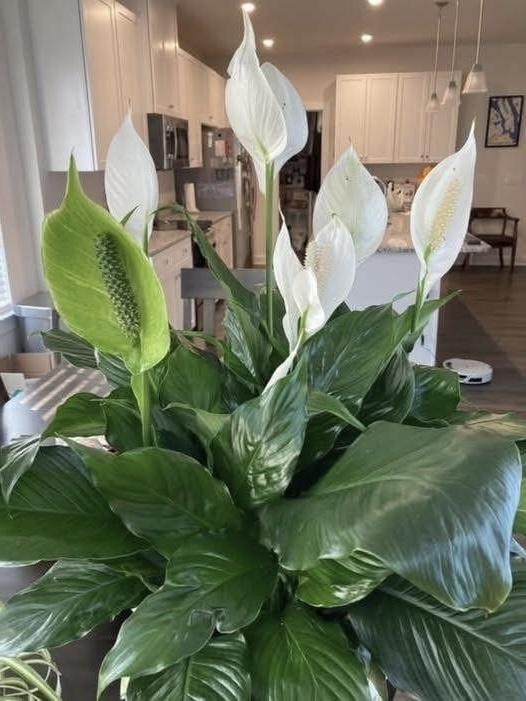
🌿 1. Provide the Right Light
- Peace lilies tolerate low light, but they bloom best in bright, indirect light.
- Too little light = lush green leaves, but few or no flowers.
- Avoid direct sun, which can scorch leaves. A north or east-facing window is perfect.
💧 2. Water Properly
Ad
- Keep the soil evenly moist, not soggy.
- Water when the top inch of soil feels dry.
- Peace lilies are sensitive to chlorine and fluoride—use filtered, distilled, or left-out tap water if possible.
🌡 3. Maintain Warm, Humid Conditions
- Ideal temperature: 65–80°F (18–27°C).
- Keep away from cold drafts, AC vents, or heaters.
- Boost humidity with a pebble tray, misting, or a humidifier.
🌱 4. Fertilize for Flowers
Ad
- Use a balanced houseplant fertilizer (10-10-10 or 20-20-20), diluted to half strength.
- Feed every 6 weeks in spring and summer (their active growing season).
- Too much fertilizer = lots of leaves, no blooms.
🌸 5. Repot If Root-Bound
- Peace lilies bloom better when slightly root-bound, but if roots are circling the pot or pushing through drainage holes, it’s time to repot.
- Move to a pot just 1–2 inches larger than the old one with fresh, well-draining soil.
✂️ 6. Prune and Clean
- Remove old blooms by cutting the stem at the base—this encourages new flowers.
- Wipe leaves with a damp cloth to keep them dust-free, which helps with photosynthesis.
⏳ 7. Be Patient
- Peace lilies usually bloom twice a year (spring and sometimes fall).
- With proper care, you can encourage more frequent flowering, but it still follows the plant’s natural rhythm.
Ad




Leave a Comment